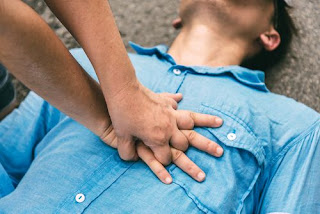Emergencies can happen at any moment, and being equipped with the right knowledge can make all the difference. First aid is not just a skill; it's a lifesaving tool that empowers individuals to respond effectively in times of crisis. The importance of learning first aid cannot be overstated, as it not only helps us protect ourselves but also enables us to assist others in their moments of vulnerability.
Understanding the fundamental principles of first aid is crucial for anyone seeking to be prepared for emergencies. These principles serve as a solid foundation for effective and safe intervention. Firstly, assessing the situation and ensuring the safety of both the victim and the rescuer is paramount. This involves identifying potential hazards and taking measures to minimize them. Secondly, understanding the ABCs of first aid: Airway, Breathing, and Circulation. Ensuring an open airway, assessing breathing, and checking for a pulse are essential steps. Thirdly, seeking professional medical help is crucial; first aid is meant to provide initial assistance, not to replace professional medical care.
let's delve deeper into the must-know first aid interventions using mnemonics and providing detailed explanations for each:
CPR with "Bee-Rhythm" :
B = Begin chest compressions: In case someone is unresponsive and not breathing normally, start chest compressions by pushing hard and fast in the center of the chest. Aim for a rate of about 100-120 compressions per minute, like the beat of a lively "bee" song.
E = Ensure the Airway is open: Make sure the person's airway is clear by gently tilting their head back and lifting their chin. This helps maintain an open-air passage, essential for effective resuscitation.
E = Examine Breathing: After performing 30 chest compressions, give 2 rescue breaths. Watch for the chest to rise as you deliver each breath, ensuring air is reaching the lungs.
R = Repeat compressions: Continue the cycle of 30 chest compressions followed by 2 rescue breaths until help arrives or the person starts breathing on their own.
H = Help arrives: Call emergency services right away, and continue CPR until professional help takes over. You're like a lifeguard for their breathing.
Burns with "CCC - Cool, Cover, Call"
C = Cool the burn with cold water: Place the burned area under cool (not icy) running water for at least 10 minutes. This helps reduce pain and prevents the burn from getting worse.
C = Cover the burn with a clean cloth: After cooling the burn, loosely cover it with a sterile, non-stick bandage or a clean cloth to protect it from dirt and bacteria.
C = Call for professional help if needed: If the burn is severe, covers a large area, or if it's an electrical or chemical burn, seek medical attention. Smaller burns can often be managed at home, but it's essential to assess the situation.
Cuts with "CCC - Clean, Cover, Call"
C = Clean the cut with soap and water: Gently clean the cut with mild soap and running water to reduce the risk of infection. Pat the area dry with a clean cloth or sterile gauze.
C = Cover it with a bandage: Apply an adhesive bandage or sterile gauze pad to keep the cut clean and protected. This helps prevent dirt and germs from getting in.
C = Call for help if deep or severe bleeding: If the cut is deep, gaping, or bleeding heavily, apply direct pressure with a clean cloth and call for professional medical assistance. Stitches or further evaluation may be needed.
Choking with "LL - Little Lifeguard"
L = Stand behind the person: Position yourself behind the choking individual, ready to assist.
L = Lift their chin, creating an open airway: Place your hands on their lower jaw, lifting it gently while supporting the chin. This opens the airway and prevents tongue obstruction, allowing them to breathe.
Heat-related issues with "CHILL - Cooling Hug"
C = Cool down in a shaded place: Move the person to a shaded or air-conditioned area to prevent further heat exposure.
H = Help them sit down: Make sure the person sits or lies down comfortably, reducing the risk of falls due to dizziness.
I = If conscious, offer water: If the person is awake and able to swallow, provide cool water to sip slowly, helping to rehydrate and cool down.
L = Look after them until they feel better: Keep an eye on them, offering reassurance and comfort, allowing them to recover gradually.
L = Let them rest: Encourage the person to rest and recover, avoiding strenuous activities until they fully recuperate.
Dislocations with "Buddy Brace"
B = Buddy Brace: In case of a suspected dislocation, immobilize the injured limb by creating a "buddy system" with the uninjured limb. Use a soft cloth or bandage to secure the injured limb to the uninjured one. This prevents further movement and reduces pain while waiting for professional help.
Hypothermia with "Warm Hug"
W = Warm place: Move the person to a warm environment to prevent further heat loss.
A = Remove wet clothing: If their clothes are wet, remove them gently, replacing them with dry layers or blankets.
R = Wrap in warm blankets: Cover the person with warm blankets or layers, ensuring they're adequately insulated.
M = Make sure they're hydrated (non-alcoholic): Offer warm, non-alcoholic beverages if the person is conscious and able to swallow. This helps raise their body temperature and prevent dehydration.
Finally, reading and engaging in first aid information sessions is crucial because it empowers us to respond effectively during emergencies, potentially saving lives. This knowledge builds confidence, fosters community safety, and allows us to be proactive, compassionate helpers in times of need. It's a small effort with enormous impact, making our world a safer place.

very informative - wellnesssleuth.com
ReplyDeleteGreat post!
ReplyDeleteVery important information and something we should all know. Thanks for sharing!
ReplyDeleteWell informative on how to save life
ReplyDelete